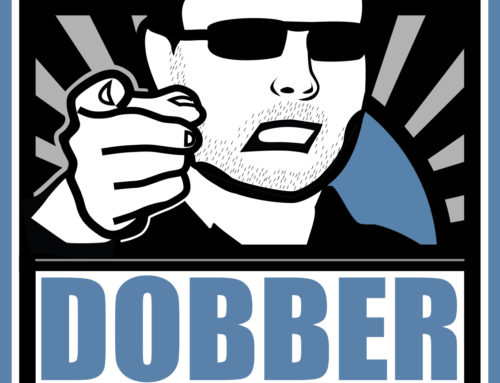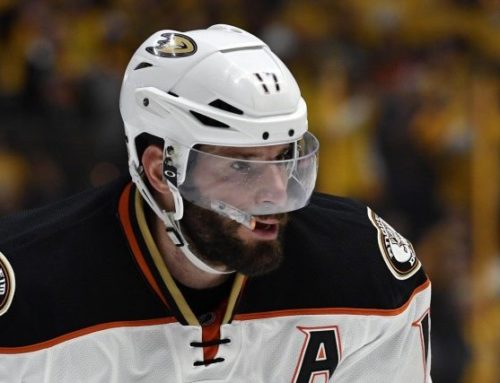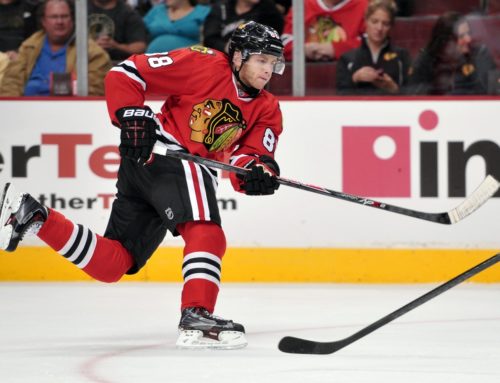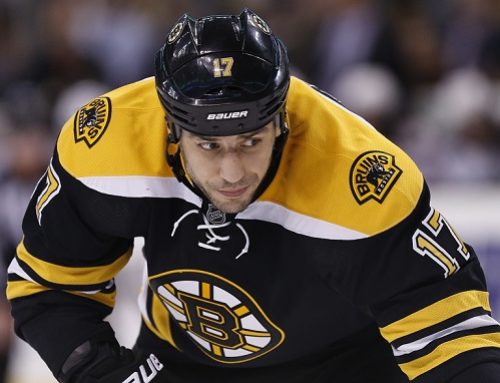
The third annual Prime Cuts roster is here! Check out the Prime Cuts rosters from 2007-08 and 2008-09. The thinking process that goes in to selecting the team is similar to Pierre McGuire's "Monsters" for TSN (I promise that is the first and only time I will compare my thinking process to Pierre's). Since this is a fantasy hockey site, the selection process favours players that have had strong seasons on the score sheet, obviously. However, not just goals and assists are weighted – perhaps a player has started to shoot the puck more, or play better defensively. Intangibles like heart, grit, and determination factor in to the selection process as well. It is far and away my favourite article to write each year, and I hope you will all enjoy reading it as much as I have enjoyed writing it!
Part 3 of the article series will name the top defensive pairing and second forward line.

The first pairing: Duncan Keith and Mike Green
There were three obvious choices for the Prime Cuts top pairing: Keith, Green, and Drew Doughty. I opted to go with the first two, but any combination of the three would have been more than sufficient.
Keith had an absolutely sensational season both offensively and defensively. He finished 2009-10 with 14 goals, 55 assists, a plus-21 rating, 213 shots on goal, over 26 minutes of ice time per game, and a shiny gold medal around his neck. He played nearly three minutes per game on both the penalty kill and power play for the Blackhawks. His production jumped up by 25 points from 2008-09, which is quite remarkable, considering his power play time increased by only 20 seconds per game, and his overall ice time by less than a minute per game. Chicago lost confidence in Cam Barker on the power play, and this enabled Keith to move up from the second power play unit, which he played on in 2008-09, to the top unit this past season. His 16 power play points in 2009-10 were only five more than he had in the previous season, though.
Keith simply improved his offensive game in all situations. He has always been comfortable rushing the puck, but he made smarter plays on a more consistent basis this season. His ability to transition from defence to offense (and vice versa) is remarkable, and played a huge part in Chicago winning its first Central division title since 1993 (back when it was still called the Norris division). His defensive partner, Brent Seabrook, finished the season with only 30 points, less than half of Keith's total. He'd be my pick for the Norris Trophy this season, although it is very close among the top three.
Even with his often-criticised defensive blunders, Mike Green's numbers are simply too hard to ignore. Back-to-back 70+ point seasons as a defenseman is an incredible feat. Washington's potent offensive system seems tailor-made for Green's game, but I have no doubts that he would produce very similar numbers even if he played elsewhere. Green led all NHL defensemen in goals, assists, points, power play goals, and was second in plus-minus (trailing only teammate and defensive partner Jeff Schultz) and game-winning goals.
Will Green continue to hover around the 70-80 point mark, or can he go higher? He has averaged 72 games over the past two seasons, and he often puts himself in dangerous situations with his high risk playing style. If he is able to play a full 82 game season, 90 points is not out of the question. Some poolies are worried that the emerging John Carlson will eat up some of Green's power play time, and they may have a case. However, as the saying goes, worry about crossing that bridge when you get to it.

The second line: Jussi Jokinen, Steven Stamkos, and Chris Stewart
Of all 30 goal scorers in the NHL this past season, the only players who played less than Jokinen's 16:48 per game were Matt Moulson (16.38) and Patric Hornqvist (15:41). Jokinen's breakout offensive season was all the more impressive considering where he was only a season ago. After being trade to Tampa Bay in the Brad Richards deal, he bounced around the Lightning lineup without much success. He was eventually waived and then dealt to Carolina, and many had written him off as nothing more than a shootout specialist (a title he deservingly earned dating back to his time with the Dallas Stars). Before scoring 30 goals in 81 games with Carolina in 2009-10, he had only nine goals in his previous 91 regular season games – quite the turnaround indeed.
He has found a home in Carolina alongside Eric Staal on the Hurricanes top line. He scored seven goals last spring for Carolina as they advanced to the Eastern Conference Finals. His 30 goals this past season were his most since scoring 17 back in 2005-06. He was also a very respectable plus-3 on at team that featured a minus-29 (Rod Brind'Amour) and a minus-15 (Sergei Samsonov) up front. He may be in tough to repeat 30 goals next season, especially with the youth movement going on in Carolina – Drayson Bowman, Zach Boychuk, and Jiri Tlusty are all looking to earn roster spots for next season. However, if Jokinen can stick with Staal on the top unit, another career year isn't out of the question.
Steven Stamkos had a very average rookie season for a first-overall pick. He finished 2008-09 with 23 goals, 23 assists, and 181 shots on goal. His play improved considerably down the stretch, but many expected more from the former OHL star. Stamkos dedicated last summer to improving his strength, and his hard work paid off in spades. He finished this season with 51 goals, tied with Sidney Crosby for the league lead. He also finished fifth in NHL scoring with 95 points. His 24 power play goals were first in the league by a considerable margin (Dany Heatley was second with 18). Simply put, Stamkos was dominant offensively this season from start to finish. A large part of his success was due to the fantastic season put up by his line mate Martin St. Louis, but the case could be made that the two fed off of each other equally.
Albert Einstein was quoted as saying that insanity could be described as doing the same thing over and over again and expecting different results. If that is the case, most of Tampa Bay's opponents this past season could be deemed insane. Of the 24 power play goals Stamkos scored, I'd wager 20 of them were nearly identical. He loved to set up in the high slot and receive a one-timer from St. Louis or Kurtis Foster, and hammer it high and short side. The fact that teams knew exactly what Stamkos loved to do and still couldn't stop him made it all the more impressive to watch. The only real weakness in his game is on the dot, but most young centers struggle with faceoffs early on in their careers. Sidney Crosby was a 45 percent faceoff man during his rookie season in 2005-06, and he finished last season with an incredible 55.9 faceoff percentage.
Chris Stewart impressed with his size and physically last season in Colorado. He finished 2008-09 with a respectable 11 goals in 53 games, and many in Colorado were excited at watching him develop into a very solid second line power forward down the road. Stewart instead arrived as a top line bruiser in 2009-10 and never looked back. He led Colorado in goals with 28, game-winning goals with five, and shots on goal with 221. He plays the quintessential power forward game – he will drop the mitts, he can skate and make plays, and he is a very intimidating presence in all three zones. The reason for his offensive breakout first and foremost is his wicked shot, which enabled him to bury many of those 28 goals.
The roster (to date):
XXX-XXX-XXX
Jussi Jokinen – Steven Stamkos – Chris Stewart
Steve Downie – Brandon Sutter – Eric Fehr
TJ Galiardi – Jay McClement – Ian Lapperiere
Duncan Keith – Mike Green
Tyler Myers – Joni Pitkanen
Keith Yandle – Mark Giordano
XXX
Tuukka Rask






 UTA
UTA ANA
ANA MIN
MIN CAR
CAR MTL
MTL NYI
NYI VGK
VGK DET
DET VAN
VAN
